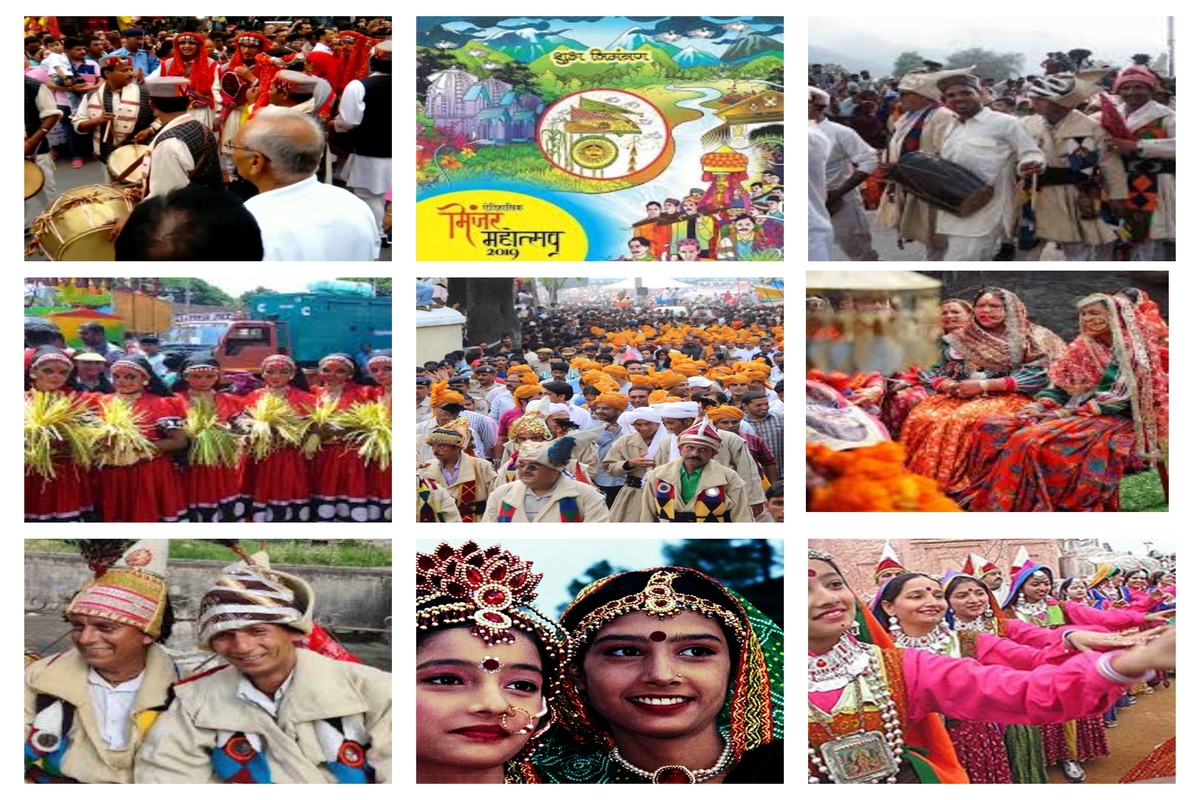Celebrated on the second Sunday of the Shravana month, which falls in July-August, Minjar is one of the most popular fairs in Chamba, Himachal Pradesh. The fair is attended by people in huge numbers who visit from across the country as well as the world.
Minjar is originally celebrated in commemoration of the victory of the King of Chamba over the ruler of Trigarta, which is now known as Kangra, in 935 AD. When the king returned victorious after the battle, the people of the Chamba valley greeted him with bunches of paddy and maize, as a symbol of prosperity and happiness.
Advertisement
The fair is a week-long celebration that begins when the Minjar flag is hoisted in the Chowgan area of Chamba valley. The fair is announced by the distribution of a silk tassel called Minjar that is worn over their dresses by men and women alike. This tassel has designs that refer to the shoots of paddy and maize. The town of Chamba transforms into a ‘riot of colours’ with everyone showing up in their best outfits. Sports and cultural programs are organised during the festival.
On the third Sunday, the fair is at its best, when the colourful Minjar ceremony of the deities commences in the form of a parade. The ceremony consists of dancing troupes, and traditional drum players accompanied by locals in their traditional attires. The parade begins its march from Akhand Chandi Palace and heads towards the final venue near the Police Lines, Nalhora. It is accompanied by the police and home guards band.
As the parade reaches the location, huge groups of people are already present there to receive the congregation. The heir of the monarchy, and now the chief guest throws a coconut, a rupee, a seasonal fruit, and a Minjar (shoots of corn) tied in a red piece of cloth, called Lohan, as an offering to the river. This is followed by all the people throwing their Minjars into the river.
The traditional song, Kumjari-Malhar, is sung by local artists. As a gesture of respect and festivity, betel leaves and ittra are offered to everyone among the invitees.
As per the tales, until 1943, during the ceremony, people used to push a buffalo into the river to propitiate the river gods. If it was carried away and drowned, the event was regarded as propitious, the sacrifice having been accepted. If it crossed the river and reached the other bank, that also was favourable as it was believed that all the sins of the town were transferred to the other side of the river.
Due to the wide coverage by broadcast and print media all over the world, Minjar fair has been declared one of the international fairs of Himachal Pradesh.
This year during the celebration, Rajendra Vishwanath Arlekar, Governor, Himachal Pradesh, said that Himachal’s glorious history and rich folk traditions are playing an important role in the progress and development of the State. He said that Chamba has a rich folk culture and this culture was being protected by the people since time immemorial. He called upon the people that the local traditional folk culture and social harmony should be preserved in this manner.
He said that Himachal has kept its traditional culture alive despite the modern influences and this was a great achievement, the credit for which goes to various fairs and festivals celebrated in the entire state.
Arlekar also mentioned the famous works of district Chamba Rumal (Handkerchief) and Chamba Chappal (Footwear slipper). He added that Chamba was getting fame due to the Geographical Indication (GI tag) of Chamba Chappal and Chamba Rumal.
Earlier, the Governor formally inaugurated the Minjar Mela by hoisting the flag amidst the traditional Kunjadi Malhar song of Chamba.
He also inaugurated the exhibition installed by various government departments, boards and corporations depicting the achievements of the present Government and also evinced keen interest in it.
On the occasion, the Governor also announced the formal commencement of the Minjar Mela Sports Competitions.









